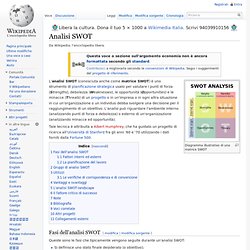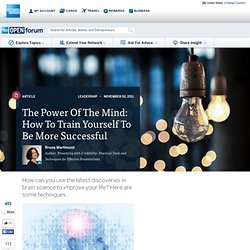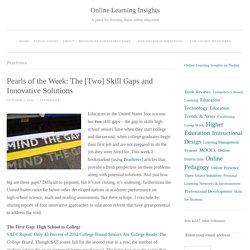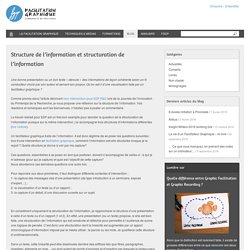

1299064473-multitasking-effect-on-brain.png (PNG Image, 1000 × 2193 pixels) - Scaled (30%) Reference Management. Productivity online utilities. How Technology Wires the Learning Brain. Kids between the ages of 8 and 18 spend 11.5 hours a day using technology — whether that’s computers, television, mobile phones, or video games – and usually more than one at a time.

That’s a big chunk of their 15 or 16 waking hours. But does that spell doom for the next generation? Not necessarily, according to Dr. Gary Small, a neuroscientist and professor at UCLA, who spoke at the Learning & the Brain Conference last week. “Young people are born into technology, and they’re used to using it 24/7,” Small said. “The technology train has left. The downside of such immersion in technological devices, he said, is that they’re not having conversations, looking people in the eye, or noticing verbal cues. Helping Learners Remember What They Learn: 4 Time-Tested Principles. Helping Learners Remember What They Learn: 4 Time-Tested Principles Highly competent instructional designers and professionals now make the most out of scientific research.

They usually incorporate new insights, test them and repeat what works. Over time, the weaker insights falter then fade while the stronger ones remain. Brain-Based Learning. Beyond the Comfort Zone: 6 Ways to Build Independent Thinking. Image credit: iStockphoto The shift toward applying more executive function (EF) within learning and assessment will cause some discomfort in teachers and students.

The transition will not eliminate the need for memorization, as automatic use of foundational knowledge is the toolkit for the executive functions. Memorization, however, will not be adequate as meaningful learning becomes more about applying, communicating and supporting what one knows. How-to-be-productive_530adf38cc928_w1500. Analisi SWOT. Da Wikipedia, l'enciclopedia libera.

Análisis DAFO. El análisis DAFO, también conocido como análisis FODA, es una metodología de estudio de la situación de una empresa o un proyecto, analizando sus características internas (Debilidades y Fortalezas) y su situación externa (Amenazas y Oportunidades) en una matriz cuadrada.

Proviene de las siglas en inglés SWOT (Strengths, Weaknesses, Opportunities y Threats). 7 Skills To Become Super Smart. People aren’t born smart. They become smart. And to become smart you need a well-defined set of skills. Here are some tips and resources for acquiring those skills. Memory. Programming Your Brain: The Art of Learning in Three Steps. From time to time, I run into people who are interested in breaking into programming.

Last night at the company holiday party a guy (we’ll call him Sam) walked up and introduced himself, asking for advice on how to move from his current role over to development. Sam’s attitude impressed me – those with a genuine desire to learn go places quickly. And on many occasions I’ve hired someone very green simply because I could sense a genuine interest in the craft and a hunger for knowledge. The Power Of The Mind: How To Train Yourself To Be More Successful : Managing.
How can you use the latest discoveries in brain science to improve your life?

Here are some techniques. November 02, 2011 Leadership tycoon Warren Bennis once said, “We seem to collect information because we have the ability to do so, but we are so busy collecting it that we haven’t devised a means of using it. How to Learn (Almost) Anything. This is a guest post by Glen Allsopp of PluginID.

Have you ever read an informative book, only to later remember just a few main points — if anything at all? The problem might be that you’re using one of the least efficient ways of learning available. The Cone of Learning I remember back about 7 years ago when I was taking music lessons at school, there was a poster on the wall that really grabbed my attention. To be fair, it wasn’t difficult for a random object to attract your gaze as our Scottish teacher at the time didn’t have much in the way of keeping you interested.
Image Credit After doing some research, I found that the contents of that poster were based upon the work of Edgar Dale back in 1969. Today, many of you may know this as the Cone of Learning, but beware: although the cone is in fact based upon the results of Dale’s research, the percentage figures were never actually cited by Dale, and added by others after the initial investigation. Conscious Learning. Aroman. Friends & links W0W0W0W. Friends & links. Online learning insights. Educators in the United States face not one but two skill gaps – the gap in skills high school seniors have when they start college and the second, when college graduates begin their first job and are not prepared to do the job they were hired for.

This week I bookmarked [using Pearltrees] articles that provide a fresh perspective on these problems along with potential solutions. And just how big are these gaps? Difficult to pinpoint, but it’s not closing, it’s widening, furthermore the United States ranks far below other developed nations in academic performance on high-school science, math and reading assessments. But there is hope. I conclude by sharing reports of four innovative approaches to education reform that have great potential to address the void.
The First Gap: High School to CollegeSAT® Report: Only 43 Percent of 2012 College-Bound Seniors Are College Ready. We Need more Access to A.P. Rigor is Better. (2011). The Second Gap: College to the WorkforceSkills Gap? Debmorrison. Friends & links, minor. Friends & links. eVa and mindtrees. Une bonne présentation ou un bon texte « déroule » des informations de façon cohérente selon un fil conducteur choisi par son auteur et servant son propos.

Qu’en est-il d’une visualisation faite par un facilitateur graphique ? Comme promis dans l’article décrivant mon intervention pour EDF R&D lors de la Journée de l’innovation du Printemps de la Recherche, je vous propose une réflexion sur la structure de l’information. Vos réactions et remarques sont les bienvenues, n’hésitez pas à poster un commentaire. Filosofia. KM Knowledge management. Drone. Friends & links W0W0W0W. Friends & links.
PLN - Personal Learning Network.